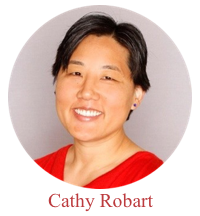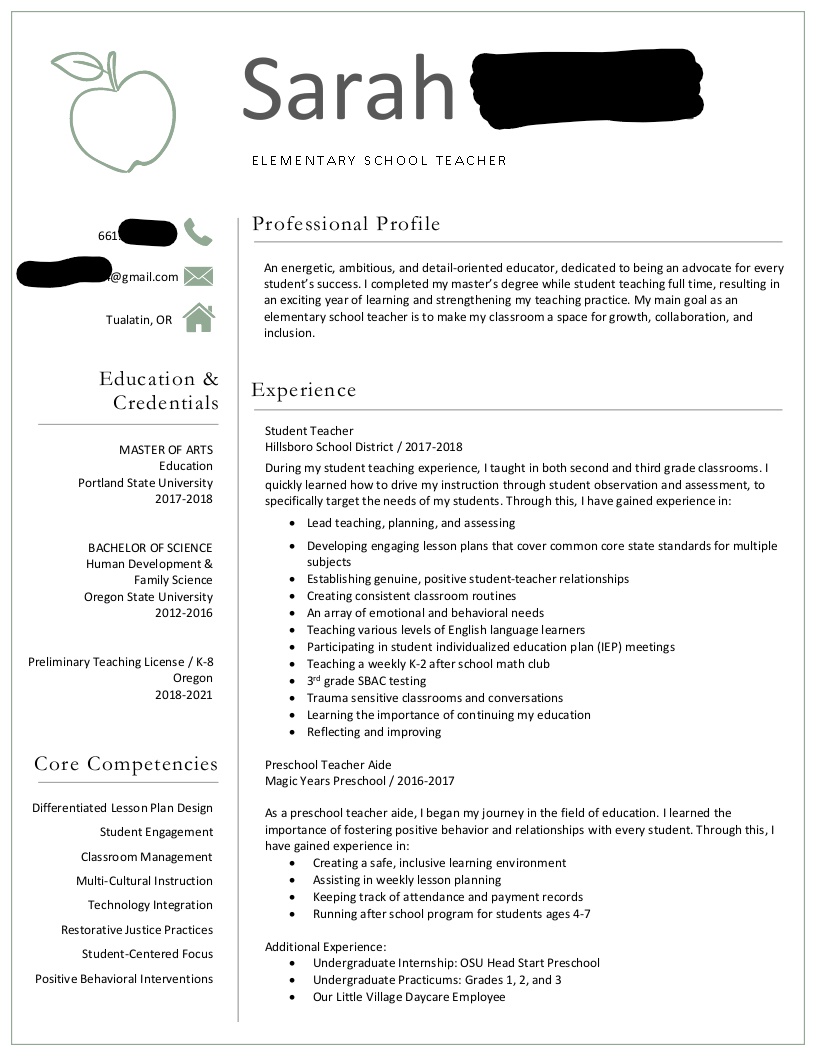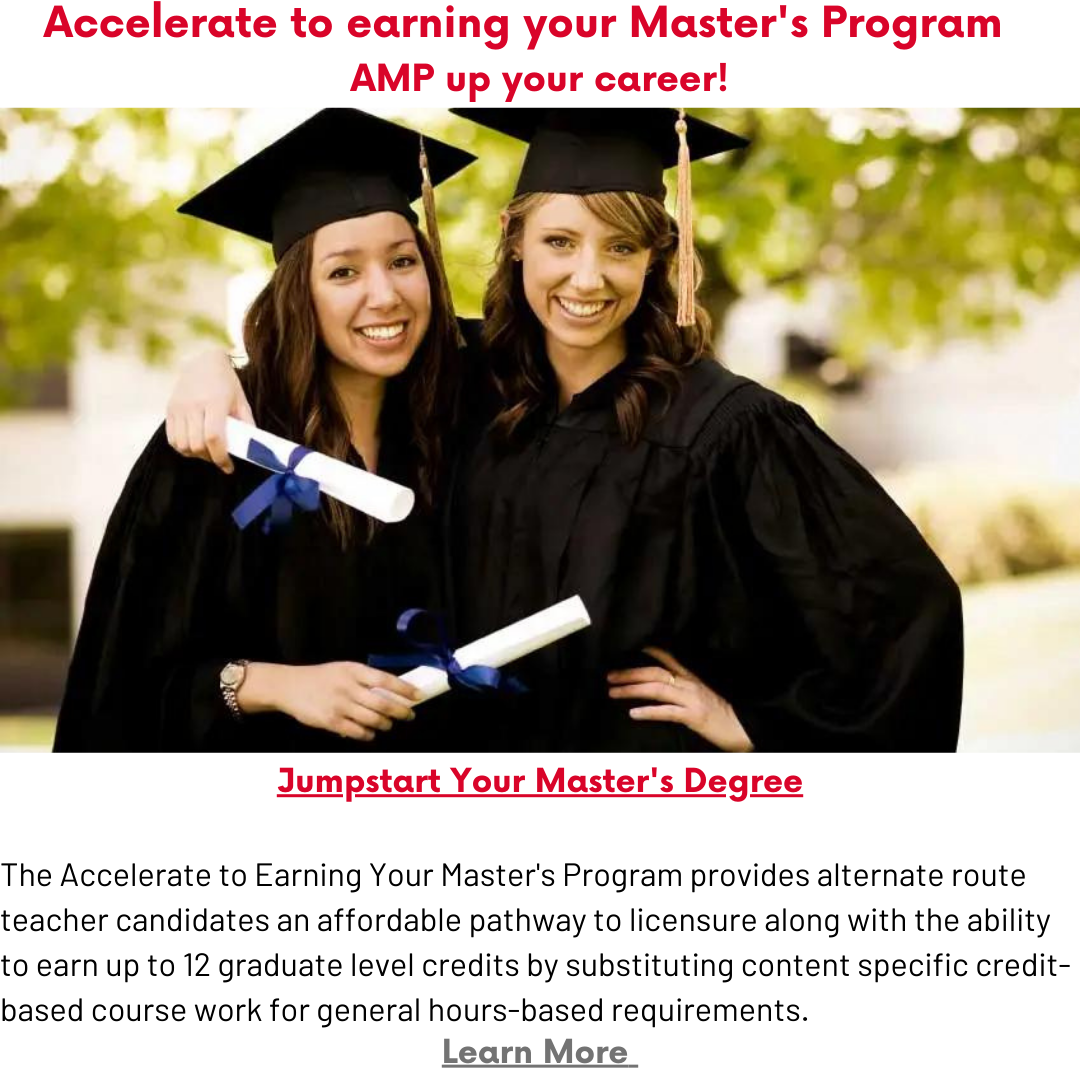8 Tips For Putting Together A Winning Teacher Resume
Guarantee your name is on the shortlist for your dream teaching job by following advice from teacher recruitment and hiring expert Cathy Robart on how to stand out as an applicant and make a strong first impression.
Forget Humility
Your resume should always include your credentials. Consider this a requirement. Rather than placing them at the bottom of your resume (if at all), display your credentials at the top of your resume in a prominent location. If you’re in the process of becoming a certified teacher, reference your enrollment in a teacher training program and add a projected date to your certification.

“I think there are way too many people, who maybe because of their humility, leave off their credentials.”
Tell A Story
Of the popular resume formats, reverse-chronological resumes are most preferred by recruiters. As opposed to skills-based resumes that emphasize positive attribute lists, reverse-chronological resumes use work experience to demonstrate skills. Recruiters prefer the actions of candidates to speak louder than words. Instead of bullet pointing relevant skills like ‘classroom management’ provide some context by saying ‘managed a class of up to 30 elementary school students with special needs and maintained a positive learning environment’.
Personal statements should also be used to fill in gaps in your resume and emphasize why you’re the best candidate for the job. Consider it as your thirty second pitch. Personal statements are particularly useful for alternate route candidates who often are career changers and recent college graduates. Use your personal statement to answer questions like: ‘Why are you switching to teaching from another industry?’ or ‘How does your schooling or life experience fuel your desire to teach?’.
Graphics and icons can serve as an aid in helping to illustrate your story. With a clear context, graphics help recruiters to envision teaching candidates in the classroom. Recruiters are impressed by candidates who take the extra steps to “pick out a tasteful and relevant icon” or “incorporate visuals in a powerful way.”

“If you tell me you’re a hard worker, I might question that as opposed to you showing me that you had a job while you were in school or volunteered. Your experiences will speak for themselves.”

Brag With Integrity
Buzzwords and awards can demonstrate your understanding of a job’s requirements, or leave reviewers questioning your integrity. When used without or out of context, buzzwords can hinder your application. However, when applicants “use buzzwords as triggers to brag about their past experiences” recruiters take notice.
In the same way, awards should be added with care. Nationally recognized awards can demonstrate a hard work ethic and professional competence. Obscure awards that require a Google search, on the other hand, could leave recruiters with a negative impression if they were to find out it was not competitive or, worst case scenario, was purchased.
Demonstrate professionalism
Your resume can either be the first or the last impression you leave with school hiring managers. Demonstrate your professionalism and hard work ethic with these tactical steps:
- Proofread. Using a spelling and grammar checking tool is one of many steps that should be part of your proofreading process. Sometimes a word can be spelled correctly, and be an incorrect word choice. You’ll only catch discrete typos by reading and re-reading your resume out loud. Proofreading is fundamental to “be[ing] complete. Do more than spell check. You’ve got to watch those homonyms.”
- #No Selfies. Equal opportunity employers prefer not to receive photos of applicants, professional or not. Yet and still, recruiters have “noticed people have been including pictures...vary[ing] from selfies on the couch to professional headshots.”
- Set up a professional email address. When employers communicate with you via email, is your full name or middle school nickname appearing in their inbox? All too often, applicants provide email addresses “that are too racy, young, [or] immature.” As a job applicant, you want every detail of your application to stand out as professional.
- Show your human side. So long as they’re not controversial, personal interests are a great conversation starter that can be referenced should your resume land you an interview. Most recruiters read them to get a feel for how a teacher can fit into the school’s culture and may bring value to the school’s extra-curricular agenda.
Cathy Robart is a Marketing & Recruitment Specialist with ESS, a national provider of substitute teachers and staff in 21 states.

 Heather Ngoma has over 25 years of experience collaborating with educators across New Jersey to drive education innovation. She currently serves as the Director of the Rutgers-GSE Alternate Route Program in the Department of Learning and Teaching, a program which helps career changers, recent college graduates, and other aspiring education professionals become licensed teachers in New Jersey. Follow her on Twitter @heatherngoma.
Heather Ngoma has over 25 years of experience collaborating with educators across New Jersey to drive education innovation. She currently serves as the Director of the Rutgers-GSE Alternate Route Program in the Department of Learning and Teaching, a program which helps career changers, recent college graduates, and other aspiring education professionals become licensed teachers in New Jersey. Follow her on Twitter @heatherngoma.





